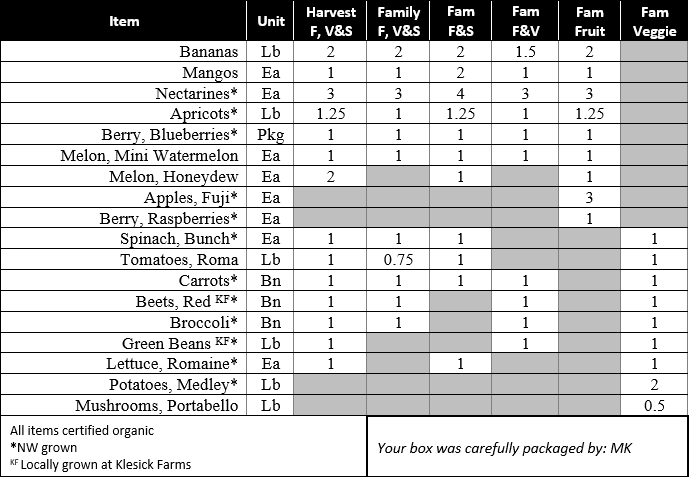In our micro climate, almost all vegetables on our farm do better when planted in May. Of course, there are always a few outliers, like peas or spinach, but for the most part the soil is warmer, the seed beds can be worked without soil compaction and the germination rates are just better for everything especially weeds!
Planting has more to do with soil type and your micro climate. For us we are a hair colder and our soil is “heavier” which means we need some warmth to get a good seedbed before planting. We certainly had a wonderful May, an okay June, and a decent start to July for planting weather. This week you are getting some wonderfully tasty beets from our May planting.
This is also the time I get my first water bills. OUCH! To review weather patterns, all I have to do is look over the previous years’ water bills! And May was hot this year. I am eagerly (not really) anticipating the July/August water bill!
Beets are a great crop to grow as a farmer and home gardener. I sow (plant) about twice as much as I need which allows me to harvest over a longer time frame. This strategy works well for beets because they can be harvested as babies or full size. As a rule, I usually plant about 25% more than needed on all crops, to accommodate for early achievers and laggards. One could say that I farm based on a bell curve!
As I shared last week, we are still planting and still weeding and still harvesting from the crops we planted in May, but June plantings are starting to make an appearance. I saw my first red tomatoes and cukes are setting fruit. We picked our first green peppers last week also!
Next week we are going to be harvesting our first crop of Frisee ever (hopefully). I am trying to time the harvest and since I have never grown it, I am paying ultra-close attention to how it responds to the heat. So far it looks great. If I am successful, I am planning on featuring it with a roasted mushroom salad. YUM!
Eating more fruits and vegetables is an important part of the solution to America’s obesity, diabetes, cancer, and heart disease crisis. Real food, grown as locally as possible and eaten as fresh as possible is a game changer for anyone’s health!
I love what I do. Yes, it is hard work, but providing your family with organically grown foods that make a difference in your health—that motivates me.
Thank you,
Tristan
Your Farmer and Community Health Activist
















